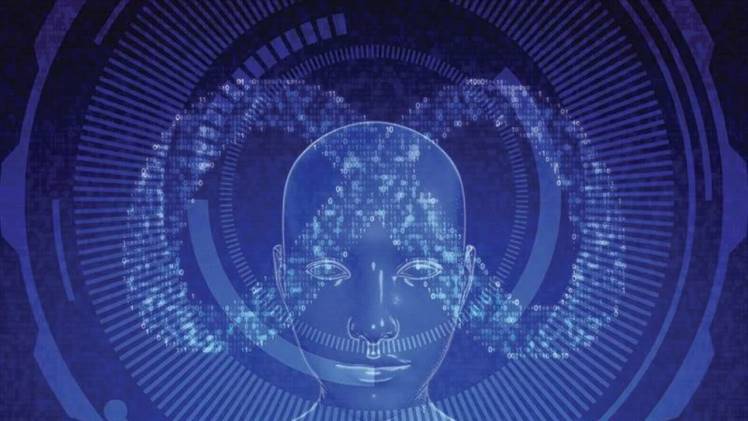Hyperverse: Unveiling the Next Frontier of Digital Reality

Introduction
In the ever-evolving landscape of digital technology, the concept of the Hyperverse has emerged as a fascinating and revolutionary phenomenon. The Hyperverse represents a paradigm shift in our perception of reality, pushing the boundaries of what we thought was possible. In this article, we will delve into the depths of the Hyperverse, exploring its definition, characteristics, potential applications, and the impact it may have on various industries. Join us on this captivating journey as we unlock the secrets of the Hyperverse and its implications for the future.
What is the Hyperverse?
The Hyperverse can be described as an interconnected and immersive digital realm that combines elements of virtual reality (VR), augmented reality (AR), mixed reality (MR), and artificial intelligence (AI). It represents a convergence of these technologies, creating a seamless and interactive experience for users. In the Hyperverse, individuals can transcend the boundaries of physical space and engage with a digital environment that blurs the line between the real and virtual worlds.
The Building Blocks of the Hyperverse
2.1. Understanding Virtual Reality (VR)
Virtual reality (VR) is a technology that simulates a computer-generated environment, enabling users to experience a completely immersive and interactive digital world. By wearing a VR headset, users can explore virtual landscapes, interact with objects, and engage in virtual experiences that mimic the real world or transcend its limitations.
2.2. Exploring Augmented Reality (AR)
Augmented reality (AR) overlays digital information onto the real world, enhancing our perception of reality. AR technology enables users to interact with virtual objects and receive real-time information, blending the physical and digital realms. Popular applications of AR include mobile games, navigation tools, and virtual try-on experiences in the fashion industry. Please visit here for all about appvelllyall.com
2.3. Embracing Mixed Reality (MR)
Mixed reality (MR) combines elements of both VR and AR, seamlessly blending digital content with the physical environment. MR technology enables users to interact with virtual objects while maintaining a connection with the real world. This allows for a more immersive and dynamic experience where virtual and real-world elements coexist. Cleck here for all about entertainment news from tamilmv
2.4. Integrating Artificial Intelligence (AI)
Artificial intelligence (AI) plays a crucial role in the Hyperverse, powering intelligent algorithms and virtual entities. AI enables the Hyperverse to adapt to users’ behaviors, preferences, and needs, creating personalized and engaging experiences. Through AI, the Hyperverse can learn and evolve, enhancing its capabilities over time.
Unleashing the Potential of the Hyperverse
The Hyperverse holds immense potential across various industries, transforming the way we communicate, entertain, educate, provide healthcare, and conduct business.
3.1. Enhanced Communication and Collaboration
The Hyperverse enables individuals to connect and communicate in entirely new ways. Through virtual environments, people can engage in realistic face-to-face interactions regardless of their physical location. Collaborative workspaces in the Hyperverse foster global collaborations, breaking down barriers of time and space.
3.2. Immersive Entertainment Experiences
Entertainment experiences within the Hyperverse are unparalleled, providing a new level of immersion and interactivity. Users can step into virtual worlds, participate in thrilling adventures, and engage with their favorite characters like never before. The Hyperverse opens up infinite possibilities for gaming, storytelling, and multimedia experiences.
3.3. Transforming Education and Training
Education and training are revolutionized within the Hyperverse. Students can embark on virtual field trips, conduct scientific experiments in simulated environments, and learn complex concepts through interactive visualizations. Professional training can be enhanced by providing realistic simulations and hands-on experiences, improving learning outcomes.
3.4. Revolutionizing Healthcare and Medicine
The Hyperverse has the potential to reshape healthcare and medicine. Surgeons can practice complex procedures in virtual operating rooms, allowing for precise and risk-free training. Patients can receive remote consultations and access virtual healthcare services, improving accessibility and quality of care.
3.5. Advancing Business and Marketing
Businesses can leverage the Hyperverse to create innovative marketing campaigns, offering immersive product experiences and interactive advertisements. Virtual showrooms and retail spaces provide customers with a unique and engaging shopping experience. The Hyperverse also opens doors for virtual conferences, trade shows, and remote collaborations, expanding global business opportunities.
Challenges and Considerations
While the Hyperverse holds tremendous promise, several challenges and considerations must be addressed to ensure its responsible and ethical implementation.
4.1. Privacy and Security Concerns
As the Hyperverse collects vast amounts of user data, privacy and security become critical issues. Safeguarding personal information and ensuring secure access to the Hyperverse are essential to protect users from potential risks and misuse of data.
4.2. Ethical Implications
The Hyperverse raises ethical questions regarding the boundaries between the real and virtual worlds. It is crucial to establish guidelines and regulations to prevent misuse, protect users from harmful content, and address concerns surrounding addiction and psychological well-being.
4.3. Technological Limitations
Although the Hyperverse presents groundbreaking possibilities, certain technological limitations need to be overcome. Enhancing the realism and resolution of virtual environments, reducing latency, and advancing hardware capabilities are areas that require continuous development.
The Future of the Hyperverse
The Hyperverse is still in its infancy, and its full potential is yet to be realized. As technology continues to advance, we can expect the Hyperverse to become more immersive, interactive, and seamlessly integrated into our daily lives. It holds the power to redefine how we perceive and interact with digital information, transforming industries and creating new opportunities for innovation.
Conclusion
The Hyperverse represents a groundbreaking leap in the realm of digital reality. Its amalgamation of virtual reality, augmented reality, mixed reality, and artificial intelligence opens up a world of possibilities across various domains. From communication and entertainment to education, healthcare, and business, the Hyperverse has the potential to reshape how we experience and interact with digital content. However, it is essential to navigate the challenges and address ethical considerations to ensure a responsible and inclusive Hyperverse that benefits all users.
FAQs (Frequently Asked Questions)
7.1. What distinguishes the Hyperverse from existing virtual reality technologies?
The Hyperverse distinguishes itself by integrating multiple technologies, including virtual reality (VR), augmented reality (AR), mixed reality (MR), and artificial intelligence (AI). It creates a seamless and interconnected digital realm that goes beyond individual technologies, offering a more immersive and interactive experience.
7.2. Will the Hyperverse replace traditional forms of entertainment?
While the Hyperverse offers new and exciting entertainment experiences, traditional forms of entertainment are unlikely to be replaced entirely. The Hyperverse complements and enhances existing entertainment mediums, offering users a different level of immersion and interactivity.
7.3. How can the Hyperverse improve educational practices?
The Hyperverse can revolutionize education by providing immersive and interactive learning experiences. Students can explore virtual environments, conduct simulations, and engage in collaborative activities that enhance understanding and retention of knowledge.
7.4. What are the potential risks associated with the Hyperverse?
Privacy and security risks are significant concerns in the Hyperverse, as personal data is collected and shared within virtual environments. Additionally, ethical issues such as addiction, psychological well-being, and exposure to harmful content need to be carefully addressed.
7.5. Are there any industries that will not be impacted by the Hyperverse?
The Hyperverse has the potential to impact a wide range of industries. However, some industries may be more affected than others. For example, industries like entertainment, education, healthcare, and marketing are likely to undergo significant transformations, while industries with limited digital integration may experience a slower adoption of Hyperverse technologies.




